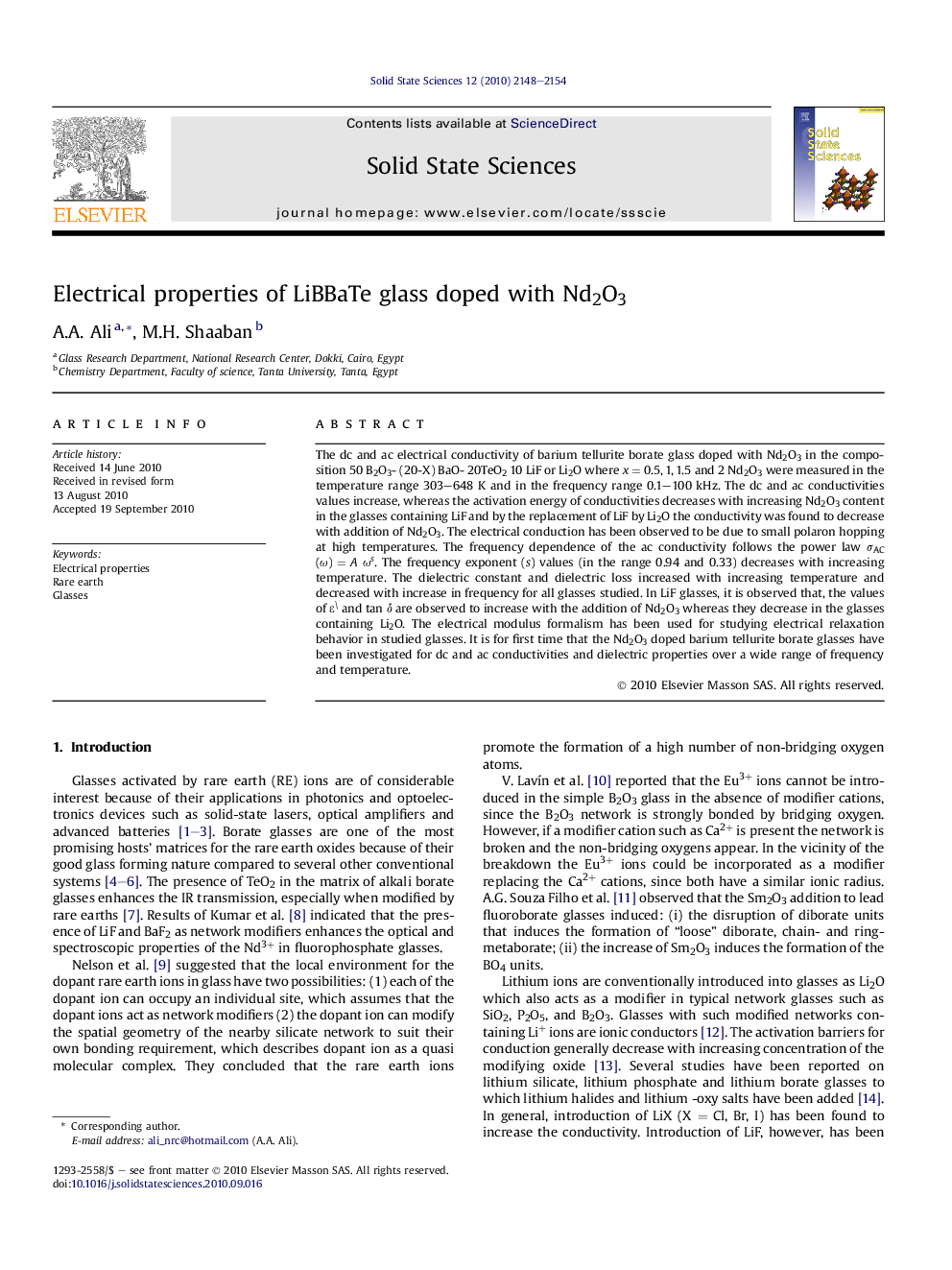| Article ID | Journal | Published Year | Pages | File Type |
|---|---|---|---|---|
| 1505808 | Solid State Sciences | 2010 | 7 Pages |
The dc and ac electrical conductivity of barium tellurite borate glass doped with Nd2O3 in the composition 50 B2O3- (20-X) BaO- 20TeO2 10 LiF or Li2O where x = 0.5, 1, 1.5 and 2 Nd2O3 were measured in the temperature range 303–648 K and in the frequency range 0.1–100 kHz. The dc and ac conductivities values increase, whereas the activation energy of conductivities decreases with increasing Nd2O3 content in the glasses containing LiF and by the replacement of LiF by Li2O the conductivity was found to decrease with addition of Nd2O3. The electrical conduction has been observed to be due to small polaron hopping at high temperatures. The frequency dependence of the ac conductivity follows the power law σAC (ω) = A ωs. The frequency exponent (s) values (in the range 0.94 and 0.33) decreases with increasing temperature. The dielectric constant and dielectric loss increased with increasing temperature and decreased with increase in frequency for all glasses studied. In LiF glasses, it is observed that, the values of ɛ\ and tan δ are observed to increase with the addition of Nd2O3 whereas they decrease in the glasses containing Li2O. The electrical modulus formalism has been used for studying electrical relaxation behavior in studied glasses. It is for first time that the Nd2O3 doped barium tellurite borate glasses have been investigated for dc and ac conductivities and dielectric properties over a wide range of frequency and temperature.
Graphical abstractFigure optionsDownload full-size imageDownload as PowerPoint slide
